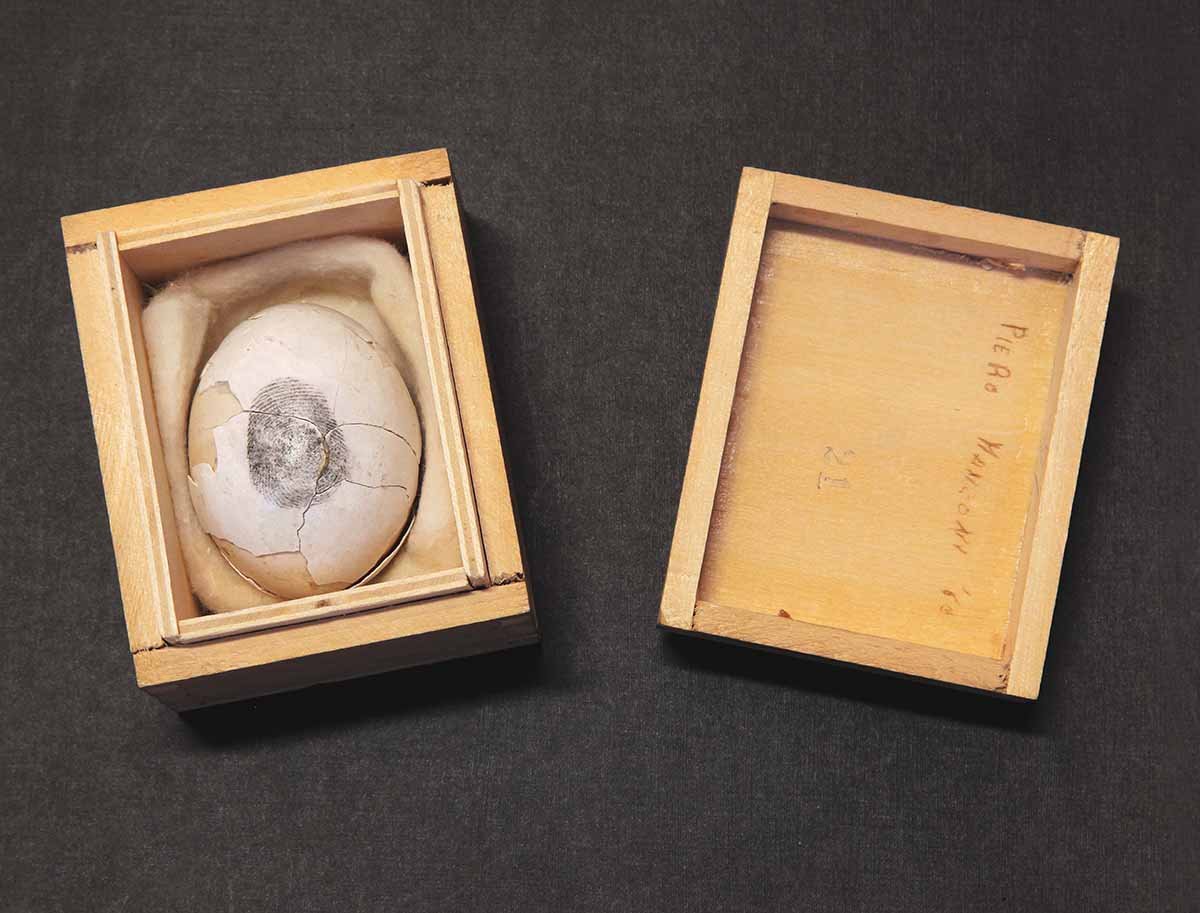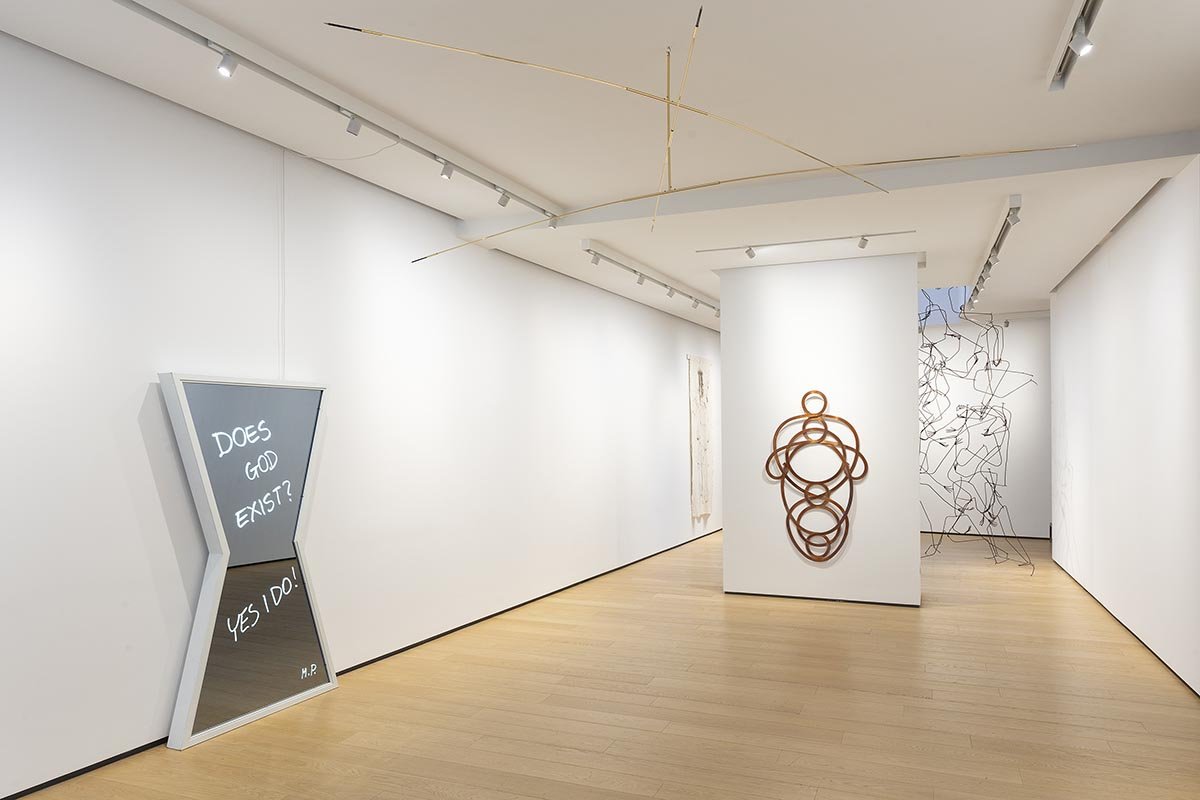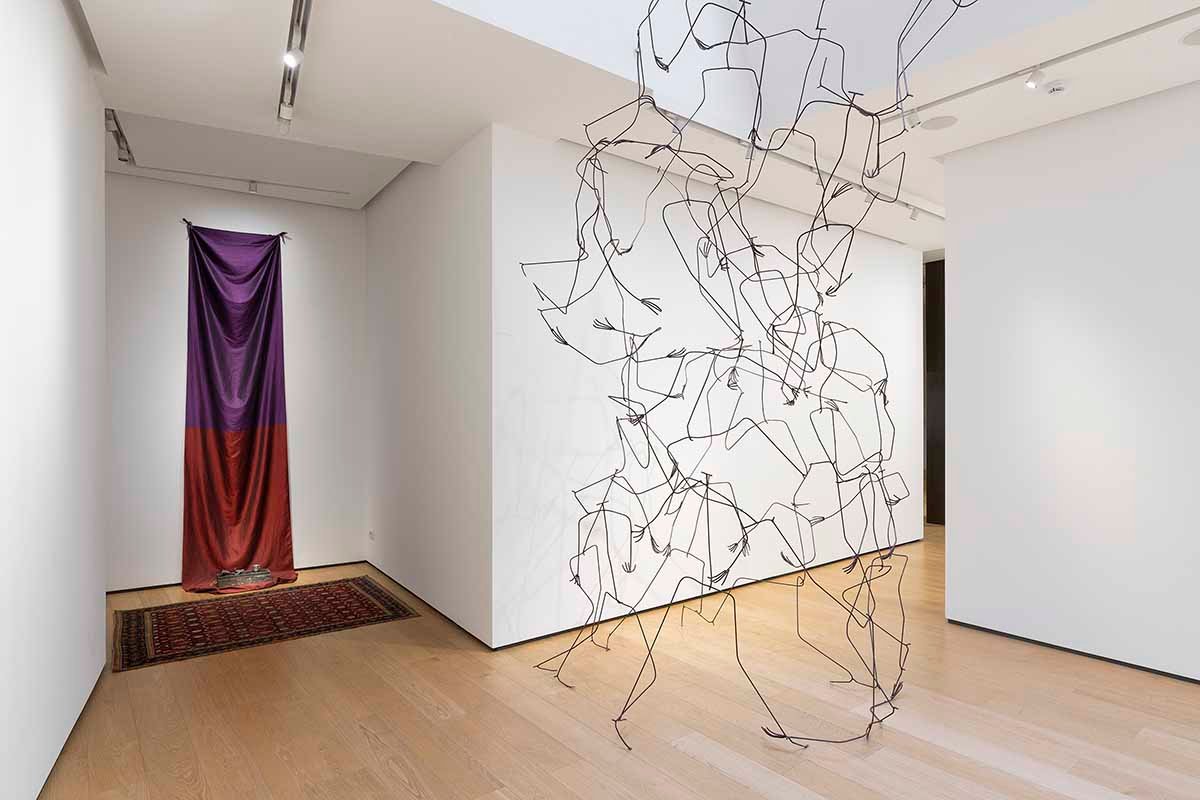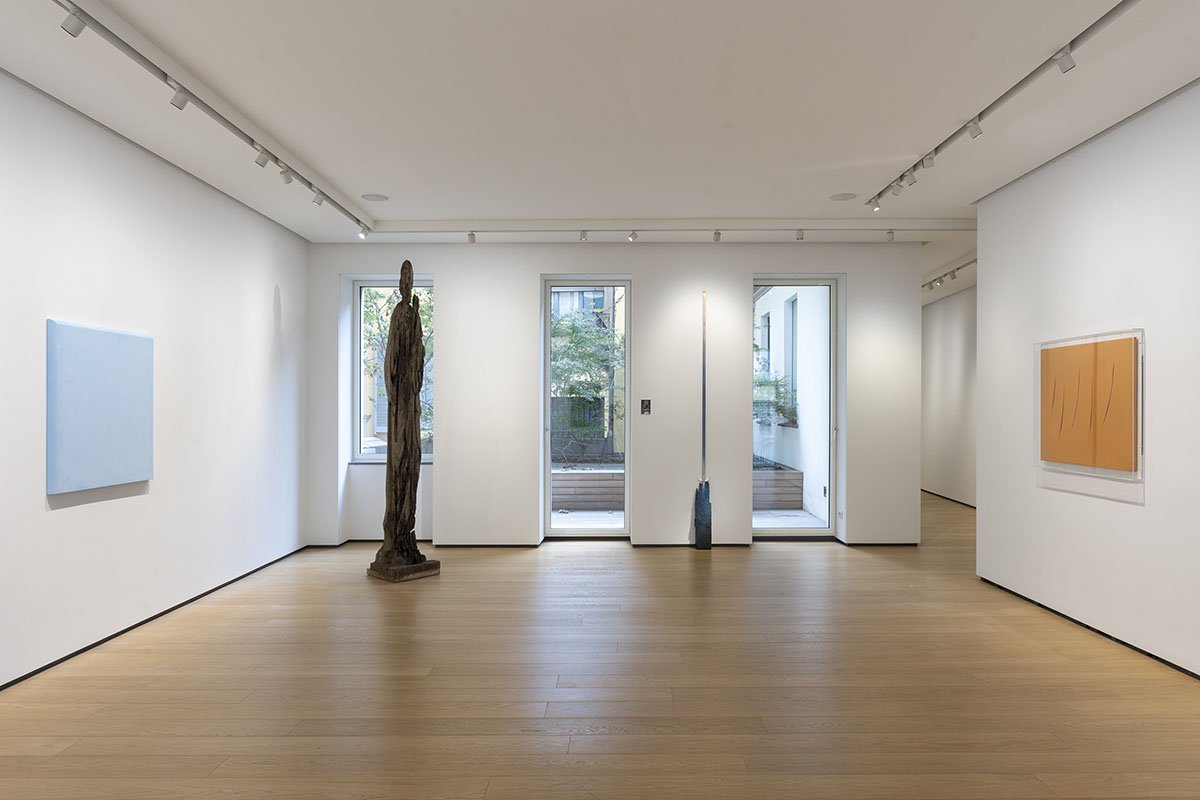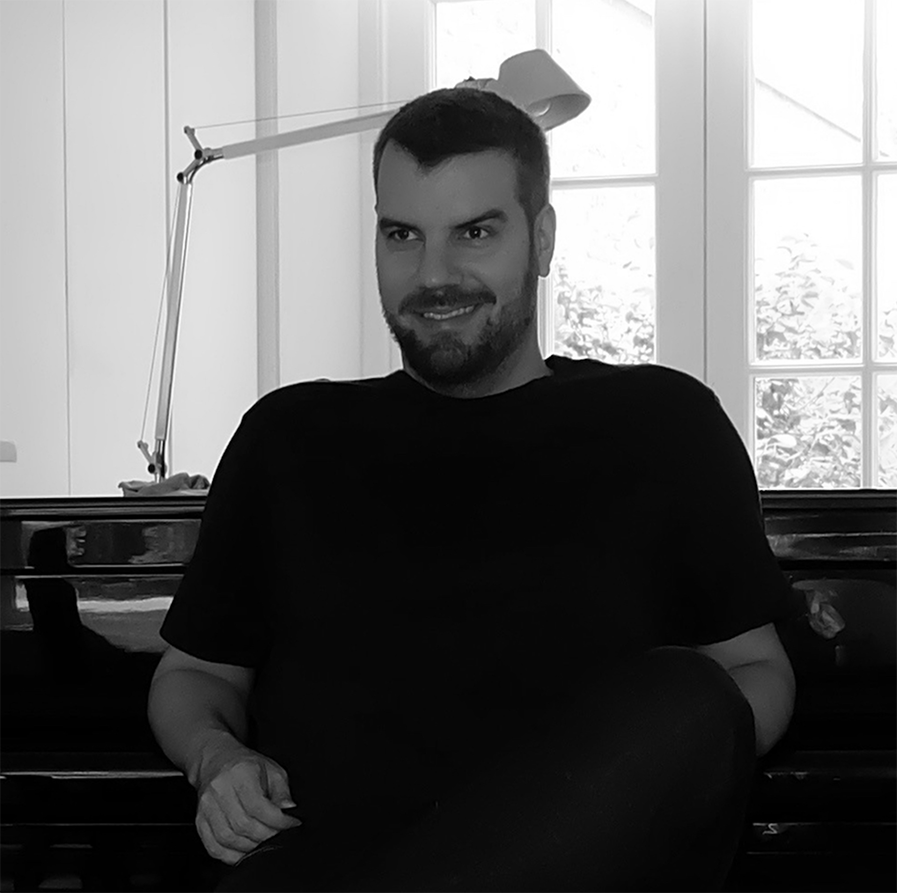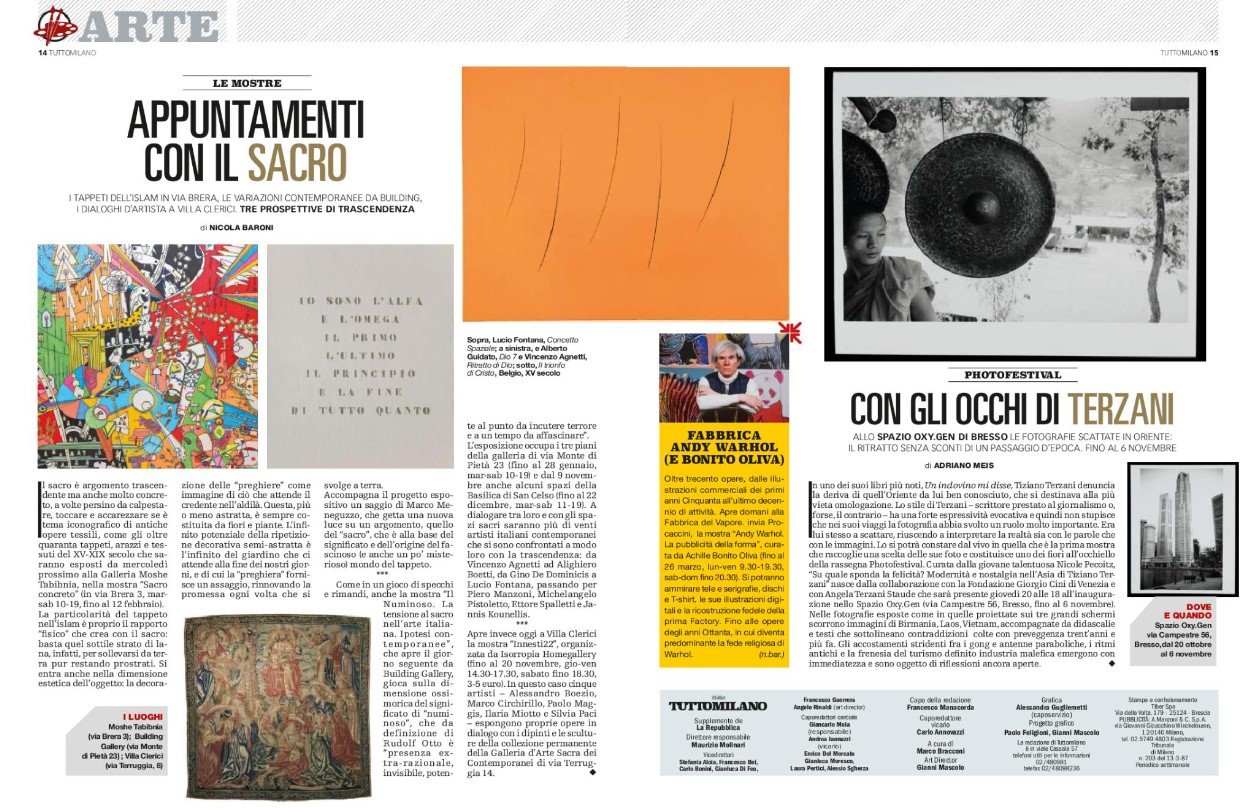Il Numinoso
27.10.2022 – 28.01.2023
From October 27th, 2022 to January 28th, 2023, BUILDING presents the exhibition Il Numinoso curated by Giorgio Verzotti, which explores the sense of the sacred in contemporary art. Featuring a selection of works from the 1960s to the present day, the show forges a dialogue between more than twenty Italian artists, from major names of the twentieth century to more recent ones: Vincenzo Agnetti, Stefano Arienti, Ferruccio Ascari, Francesca Banchelli, Bizhan Bassiri, Alighiero Boetti, Gianni Caravaggio, Gino De Dominicis, Amalia Del Ponte, Chiara Dynys, Lucio Fontana, Gaspare, Francesco Gennari, Arianna Giorgi, Alberto Guidato, Bizhan Bassiri, Maria Lai, Sergio Limonta, Marco Andrea Magni, Piero Manzoni, Simone Pellegrini, Michelangelo Pistoletto, Remo Salvadori, Nicola Samorì, Ettore Spalletti and Grazia Toderi.
Bringing together paintings, sculptures, photography, textiles, drawings and installations, it is hosted in BUILDING gallery and in Basilica di San Celso, where from November 9th to December 22th a number of artworks will engage with the atmospheric setting of a holy place.
Simultaneously, Moshe Tabibnia Gallery will host Sacro concreto exhibition, which explores the theme of the sacred in antique carpets and textiles, with a critical text by Marco Meneguzzo.
The term numinous that inspires the title of the exhibition comes from a 1917 essay by Rudolf Otto entitled “The Idea of the Holy”. Otto defines the numinous as a powerful, extra-rational, invisible presence that incites both terror and awe. This essential ambiguity is a defining characteristic of the sacred, which manifests itself through the numinous to a subject that, according to Jung, is invariably overpowered by it. Hence the use of religious practices, developed from ancient times with the idea of “taming” the numinous to make it less terrifying, sublimating and controlling it through liturgical rituals.
The numinous can thus be interpreted as a threshold that allows the subject to contemplate the sacred without being overwhelmed by its power: can we therefore view the work of art as a device that, like the liturgies, “sublimates” and “tames” the sacred, engaging with it intellectually, given that it cannot be experienced?
The encounter with the absolute, and openness to the idea of other dimensions, and the Other, characterizes much of contemporary art, or at least allows us to frame the question in terms of the notion of transcendence, something that even a secular vision of the world accepts, as the limit of rationality and scientific knowledge. Coupled with that is the sense of time’s passing, the utopian desire to stop the relentless clock, to beat Chronos and defeat death, and the fear, together with the desire, that the mighty power of the Sacred might burst into our orderly lives again and overthrow all the rules. All of these elements, and more, inform the selection of artists and works presented in the exhibition, naturally not with the idea of answering any of these big questions, but rather to reframe them in the light of the artists’ intuitions, and start up a new conversation. From Fontana and Manzoni to Pistoletto, De Dominicis and Spalletti to the very latest trends, Il Numinoso also, and perhaps above all, sets out to pay tribute to Italian art, from the post-war period to the present day.
The artists:
Vincenzo Agnetti (1926-1981), Stefano Arienti (1961), Ferruccio Ascari (1949), Francesca Banchelli (1981), Bizhan Bassiri (1954), Alighiero Boetti (1940-1994), Gianni Caravaggio (1968), Gino De Dominicis (1947-1998), Amalia Del Ponte (1936), Chiara Dynys (1958), Lucio Fontana (1899-1968), Francesco Gennari (1973), Arianna Giorgi (1965), Alberto Guidato (1972), Jannis Kounellis (1936-2017), Maria Lai (1919-2013), Sergio Limonta (1972), Marco Andrea Magni (1975), Piero Manzoni (1933-1963), Gaspare Luigi Marcone (1983), Simone Pellegrini (1972), Michelangelo Pistoletto (1933), Remo Salvadori (1947), Nicola Samorì (1977), Ettore Spalletti (1940-2019) e Grazia Toderi (1963).
The curator:
Giorgio Verzotti is an art critic and independent curator. He has been curator at Castello di Rivoli and MART in Rovereto, and director of Artefiera in Bologna. He has curated exhibitions by artists such as Carla Accardi, Vincenzo Agnetti, Carol Rama, Enzo Cucchi, Marlene Dumas, Wim Delvoye, Chiara Dynys, Douglas Gordon, Runa Islam, Mimo Jodice, Bertrand Lavier, Shirin Neshat, Giulio Paolini, Giuseppe Penone, Haim Steinbach, Armando Testa, Wolfgang Tillmans, Niele Toroni, Grazia Varisco and Luca Vitone, as well as many group exhibitions. He has written books on Terry Atkinson, Umberto Boccioni, Claudio Guarino, Imi Knoebel, Mario Merz and Gabriele Picco. He lives between Milan, the country near Novara and the Itria Valley.





